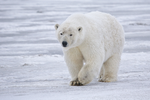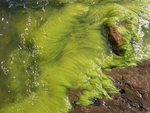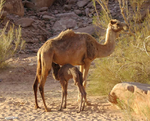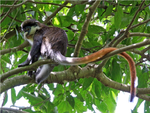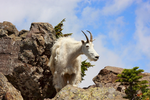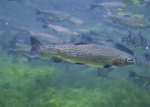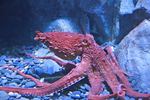Difference between revisions of "Habitat"
(→Examples) |
|||
| Line 21: | Line 21: | ||
{| class="wikitable" | {| class="wikitable" | ||
|- | |- | ||
| − | |[[File:PolarBear.png|center| | + | |[[File:PolarBear.png|center|150px]] |
| − | |[[File:Seaweed.png|center| | + | |[[File:Seaweed.png|center|150px]] |
| − | |[[File:Camel.png|center| | + | |[[File:Camel.png|center|150px]] |
| − | |[[File:Monkey.png|center| | + | |[[File:Monkey.png|center|150px]] |
|- | |- | ||
| − | |Polar bears live in an arctic '''habitat'''. | + | | style="height:20px; width:150px; text-align:center;" |Polar bears live in an arctic '''habitat'''. |
| − | |The '''habitat''' for seaweed is the coast. | + | | style="height:20px; width:150px; text-align:center;" |The '''habitat''' for seaweed is the coast. |
| − | |Camels live in a desert '''habitat'''. | + | | style="height:20px; width:150px; text-align:center;" |Camels live in a desert '''habitat'''. |
| − | |The '''habitat''' that monkeys live in is a forest. | + | | style="height:20px; width:150px; text-align:center;" |The '''habitat''' that monkeys live in is a forest. |
|- | |- | ||
| − | |[[File:Buffalo.png|center| | + | |[[File:Buffalo.png|center|150px]] |
| − | |[[File:MountainGoat.png|center| | + | |[[File:MountainGoat.png|center|150px]] |
| − | |[[File:Trout.png|center| | + | |[[File:Trout.png|center|150px]] |
| − | |[[File:Octopus.png|center| | + | |[[File:Octopus.png|center|150px]] |
|- | |- | ||
| − | |One type of [[animal]] that lives in a grassland '''habitat''' is buffalo. | + | | style="height:20px; width:150px; text-align:center;" |One type of [[animal]] that lives in a grassland '''habitat''' is buffalo. |
| − | |Mountains are an ideal '''habitat''' for mountain goats and snow leopards. | + | | style="height:20px; width:150px; text-align:center;" |Mountains are an ideal '''habitat''' for mountain goats and snow leopards. |
| − | |The best '''habitat''' for a trout is a lake or river. | + | | style="height:20px; width:150px; text-align:center;" |The best '''habitat''' for a trout is a lake or river. |
| − | |An octopus cannot survive long outside its natural '''habitat'''; the sea. | + | | style="height:20px; width:150px; text-align:center;" |An octopus cannot survive long outside its natural '''habitat'''; the sea. |
|} | |} | ||
Revision as of 18:24, 7 April 2019
Contents
Key Stage 1
Meaning
A habitat is the place where a creature lives.
About Habitats
There are lots of different habitats. Some important ones to know are:
- Arctic
- Coast
- Desert
- Forest
- Grassland
- Mountain
- River
- Sea
Each habitat can have micro-habitats where the creature survives best. Like mushrooms that live on a tree in a forest, woodlice that live underneath a rotting log in the forest or meerkats that live underground in grassland.
Examples
| Polar bears live in an arctic habitat. | The habitat for seaweed is the coast. | Camels live in a desert habitat. | The habitat that monkeys live in is a forest. |
| One type of animal that lives in a grassland habitat is buffalo. | Mountains are an ideal habitat for mountain goats and snow leopards. | The best habitat for a trout is a lake or river. | An octopus cannot survive long outside its natural habitat; the sea. |
Key Stage 2
Meaning
A habitat is the type of place where creatures live.
About Habitats
- A habitat might not have the same conditions all the time.
- Habitats can change throughout the year.
- Desert habitats can have a wet season when it rains.
- Arctic habitats can get warmer in summer and all the ice and snow can melt.
- Grassland habitats can have a wet season where the flood and a dry season where the animals don't have enough water.
- Most habitats change temperature and rainfall in different seasons.
- When a habitat changes the creatures that live in that habitat must be able to cope with the change.
- If the change is too big or happens to quickly some types of creature in that habitat may die.
Key Stage 3
Meaning
A habitat is the place where an organism is best suited to live.
Key Stage 4
Meaning
A habitat is the physical environment of an ecosystem where a community of organisms live.
About Habitats
- Organisms within a habitat are adapted to suit that habitat.
- The organisms that are best suited for a habitat are more likely to survive and reproduce. This is called survival of the fittest.
- Habitats can be changed by human activity. Global warming is changing the habitats of different organisms faster than they can evolve adaptations to suit the new environment.
